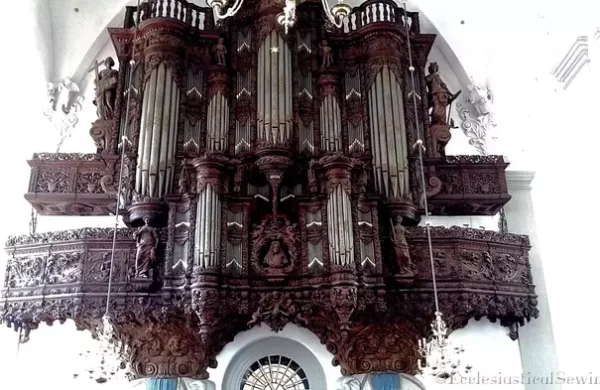
Our Saviour’s Church, built in 1680 by architect Lambert van Haven, stands on the site of a 1639 church. In the Dutch Baroque style, its Greek cross floor plan reaches 36 meters in height. The design emphasizes order in creation, with focus on God and divine right following the king. The altar, crafted by Nicodemus Tessin in 1732, uniquely depicts the Garden of Gethsemane instead of a crucifixion.
Like this:
Like Loading...
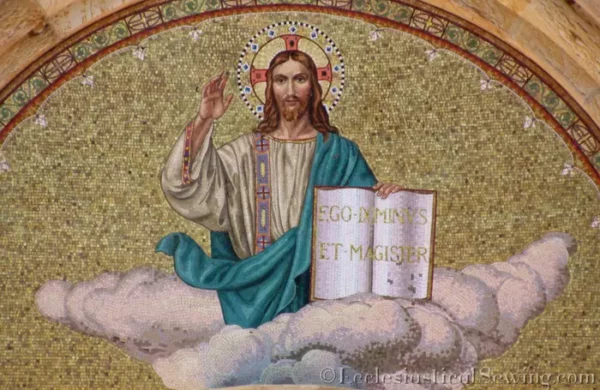
The mosaic of Christ holding a book with the words “Ego Dominus Et Magister” offers design inspiration. Details like the nimbus with cross and diamond border could be beautifully translated into hand-embroidered silk and gold threads. The orphrey on Christ’s shoulder is simple yet elegant. The swirling clouds and the mosaic border with a scroll motif and a cross framed in an oval shape also provide intriguing design ideas.
Like this:
Like Loading...
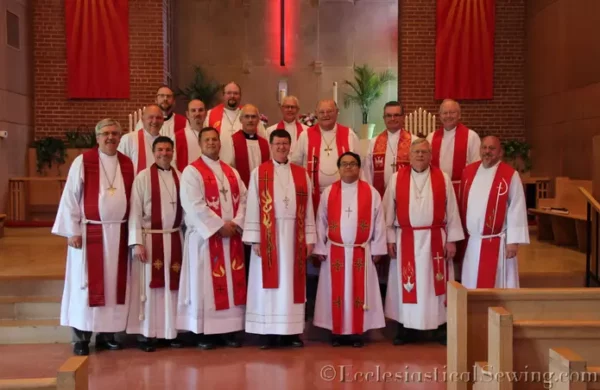
Installing a pastor in a new congregation is a special event, and many fellow pastors make a point of attending installation services to provide support, encourage, and pray for the newly called pastor. The service is rich and meaningful, with each pastor in attendance selecting and reading a scriptural text over the new pastor.
Like this:
Like Loading...
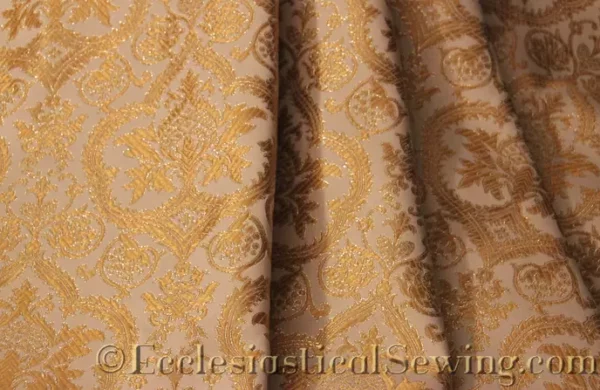
Evesham is a metallic brocade, which is difficult to capture in photos. There is a tiny glimmer of metallic threads that outline the ogee motif. As much as I like the Red and gold color combination of Evesham. The lovely white gold version of Evesham that is so very lovely in soft candlelight. The white gold is a lovely choice for Christmas and Easter Celebrations.
Like this:
Like Loading...
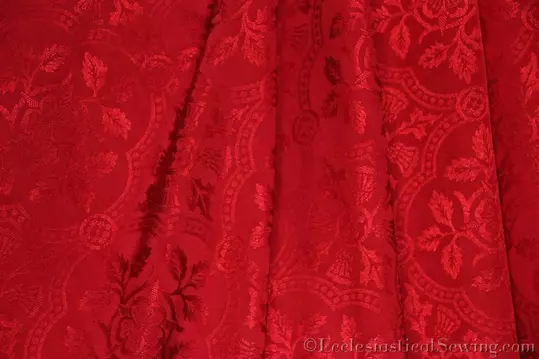
Cloister is a reversible symbolic pattern that dates from around the year 1900. If one looks closely, it is easy to see the two main design features of the Scottish Thistle and the English Rose which were popular at that time. Cloister is a lighter-weight ecclesiastical fabric that would work well for making stoles, chasubles, tunics, dalmatics, chalice veils, and other vestment pieces. Cloister would work well with machine embroidery when the proper stabilizers and backings are used.
Like this:
Like Loading...
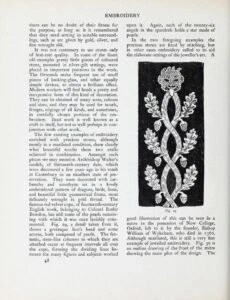
In the late 1800s, Mary Barber created a lovely collection of many examples of Opus Anglicanum.
Like this:
Like Loading...

Vintage church vestment treasures at St. Leo Monastery in Florida, Discovering a cross, made from galloon trim, the Wakefield liturgical fabric and the maniple.
Like this:
Like Loading...
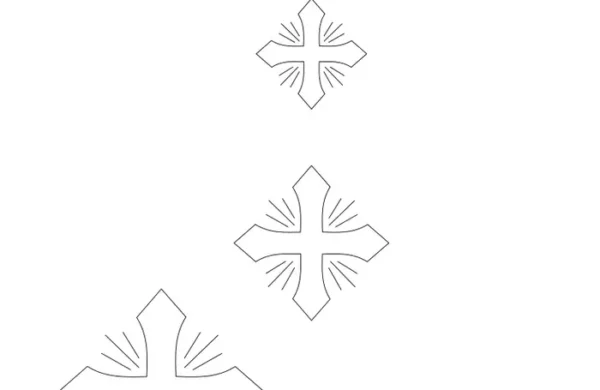
The design is a simple cross with three rays in each corner between cross bars. The Altar Linen Embroidery Design is available in 4 sizes, for purificators, lavabos, corporal a, and even the corners of a fair linen. This church linen embroidery design will use a few basic stitches such as the split stitch for an outline, and a stem stitch for the rays
Like this:
Like Loading...
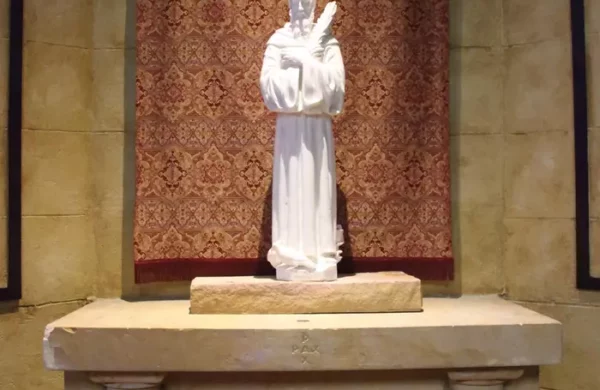
Spring travels led to St. Leo Monastery in Florida, a serene retreat with a beautiful chapel set against a lake. The exterior’s simplicity contrasts with the rich terracotta stone and tile color, a wall side lining hanging with tapestry fabric in deep reds, rusts, golds, and terracotta. The chapel’s design, statues, and fabric create a peaceful atmosphere for prayer. Despite being a brief visit, the monastery left a lasting impression, showcasing the beauty found in both vestments and architectural details.
Like this:
Like Loading...
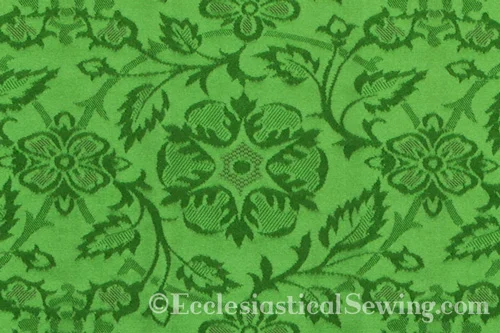
St. Aidan is a small reversible liturgical fabric that features an English Rose and vine pattern. The pattern repeat is 8″ which makes it an easy fabric to work with for those who are just starting out with pattern repeats, as well as being a favorite fabric choice for the seasoned vestment maker. St. Aidan is suitable for making stoles, chasubles, chalice veils, burses, dalmatics, and tunics as well as for other small vestment items. St. Aidan would also work for smaller altar hangings.
Like this:
Like Loading...
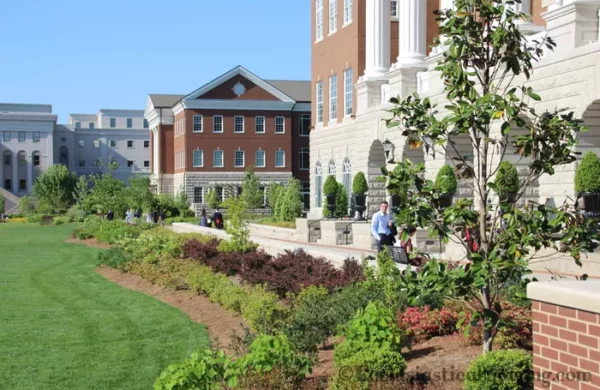
Embroidery inspiration found in Nashville and Belmont University’s beautiful campus. Academic gowns and hoods, often using Ecclesiastical fabrics, hint at the connection between university and church wear. Upcoming projects feature St. Aidan and Cloister fabrics, a popular choice for both.
Like this:
Like Loading...
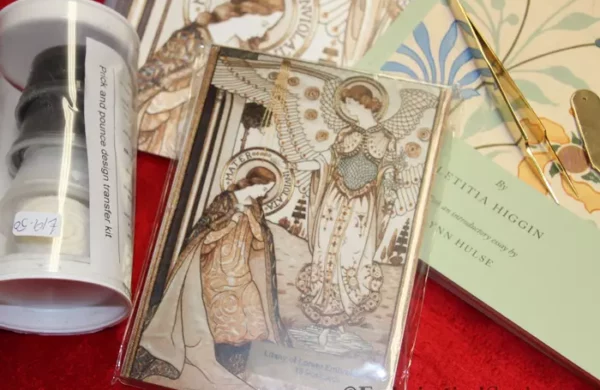
Wishlist of the Royal School of Needlework for years, plans were cancelled by scheduling conflicts. Yet, browsing to their online store provided a silver lining. The Handbook of Embroidery catalog and some enticing embroidery While missing out the classes, the excitement of exploring these ecclesiastical embroidery treasures brings comfort.
Like this:
Like Loading...
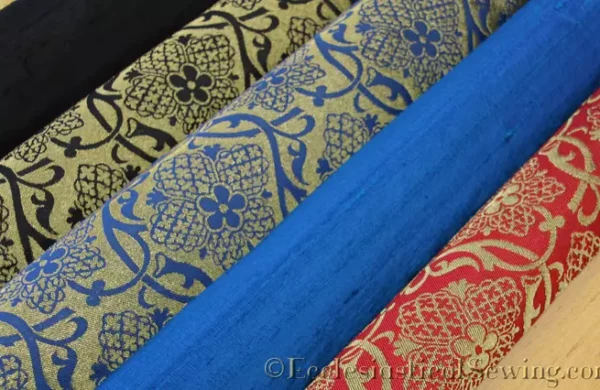
St. Hubert is ideal for orphrey bands, stoles, altar frontals, copes, dalmatics, tunics, and chasubles. Paired with Ivory Lurex St. Margaret, it creates a festive frontal for Easter, Christmas, and New Year’s weddings. The orphrey bands and superfrontal feature the gold/gold St. Hubert Liturgical Brocatelle Fabric, edged with a gold oak leaf gallon. The ivory/lurex St. Margaret adds a unique touch with subtle gold threads weaving Tudor Rose and Crown designs.
Like this:
Like Loading...
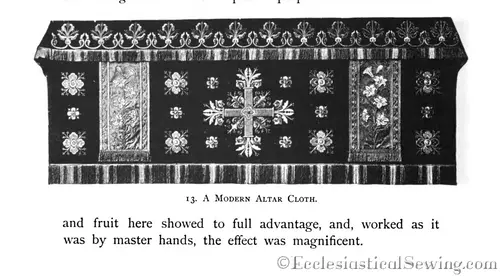
Ideas for reusing these older vestment pieces can be creative and meaningful. Considering remaking older vestments into new pieces, if it should be remade or restored?
Like this:
Like Loading...
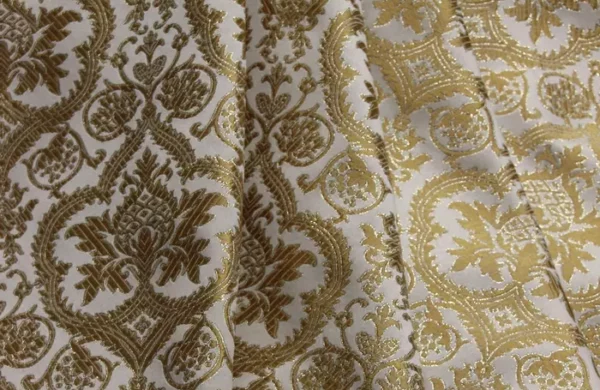
Just as we await the dawn and full light of day to behold the Resurrection, Evesham bursts forth in full light, bright and radiant as we behold the Joy of the Resurrection.
Like this:
Like Loading...

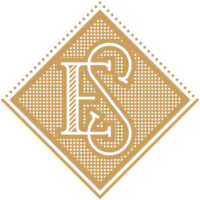














You must be logged in to post a comment.